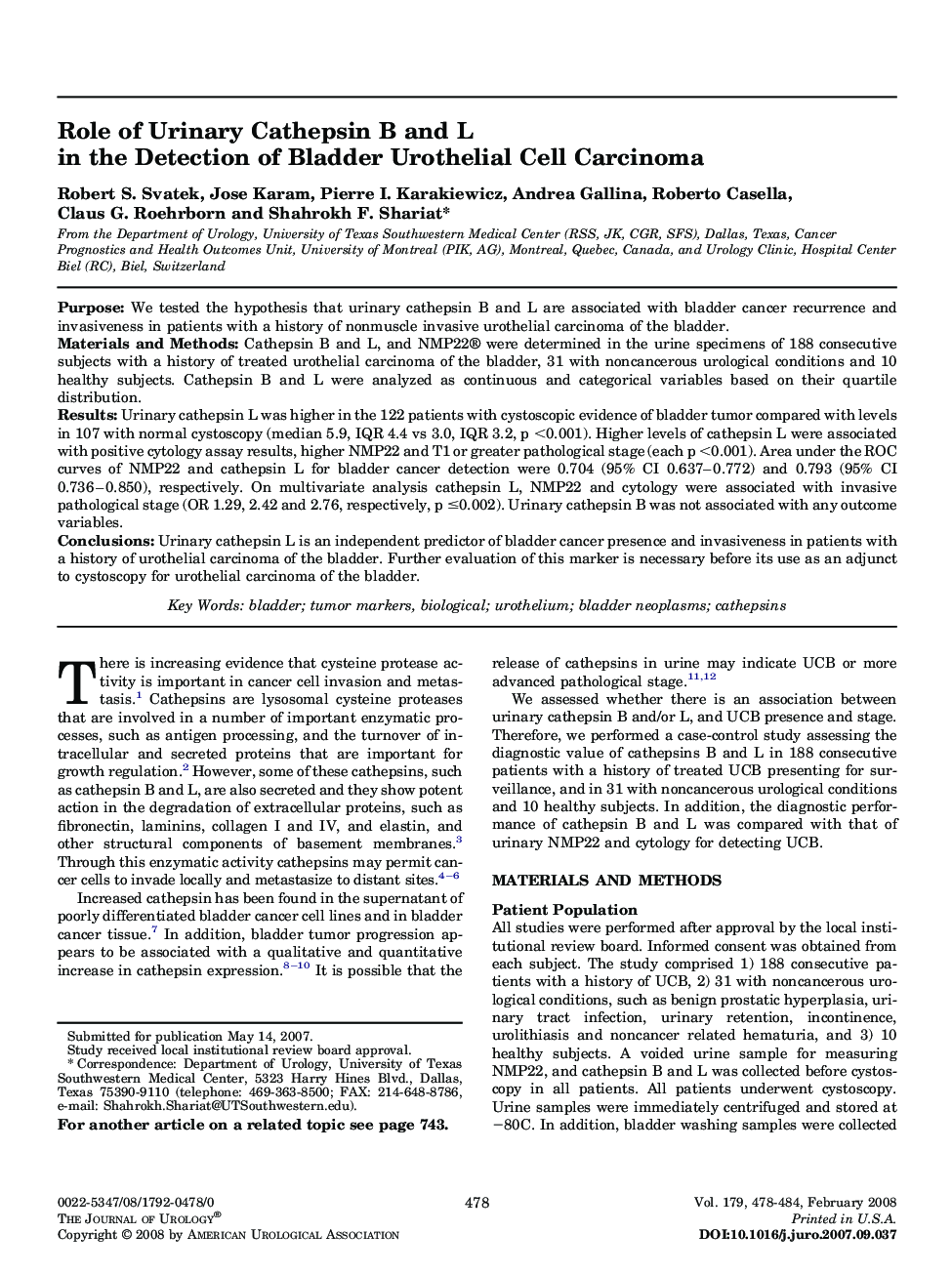| Article ID | Journal | Published Year | Pages | File Type |
|---|---|---|---|---|
| 3874349 | The Journal of Urology | 2008 | 7 Pages |
PurposeWe tested the hypothesis that urinary cathepsin B and L are associated with bladder cancer recurrence and invasiveness in patients with a history of nonmuscle invasive urothelial carcinoma of the bladder.Materials and MethodsCathepsin B and L, and NMP22® were determined in the urine specimens of 188 consecutive subjects with a history of treated urothelial carcinoma of the bladder, 31 with noncancerous urological conditions and 10 healthy subjects. Cathepsin B and L were analyzed as continuous and categorical variables based on their quartile distribution.ResultsUrinary cathepsin L was higher in the 122 patients with cystoscopic evidence of bladder tumor compared with levels in 107 with normal cystoscopy (median 5.9, IQR 4.4 vs 3.0, IQR 3.2, p <0.001). Higher levels of cathepsin L were associated with positive cytology assay results, higher NMP22 and T1 or greater pathological stage (each p <0.001). Area under the ROC curves of NMP22 and cathepsin L for bladder cancer detection were 0.704 (95% CI 0.637–0.772) and 0.793 (95% CI 0.736–0.850), respectively. On multivariate analysis cathepsin L, NMP22 and cytology were associated with invasive pathological stage (OR 1.29, 2.42 and 2.76, respectively, p ≤0.002). Urinary cathepsin B was not associated with any outcome variables.ConclusionsUrinary cathepsin L is an independent predictor of bladder cancer presence and invasiveness in patients with a history of urothelial carcinoma of the bladder. Further evaluation of this marker is necessary before its use as an adjunct to cystoscopy for urothelial carcinoma of the bladder.
